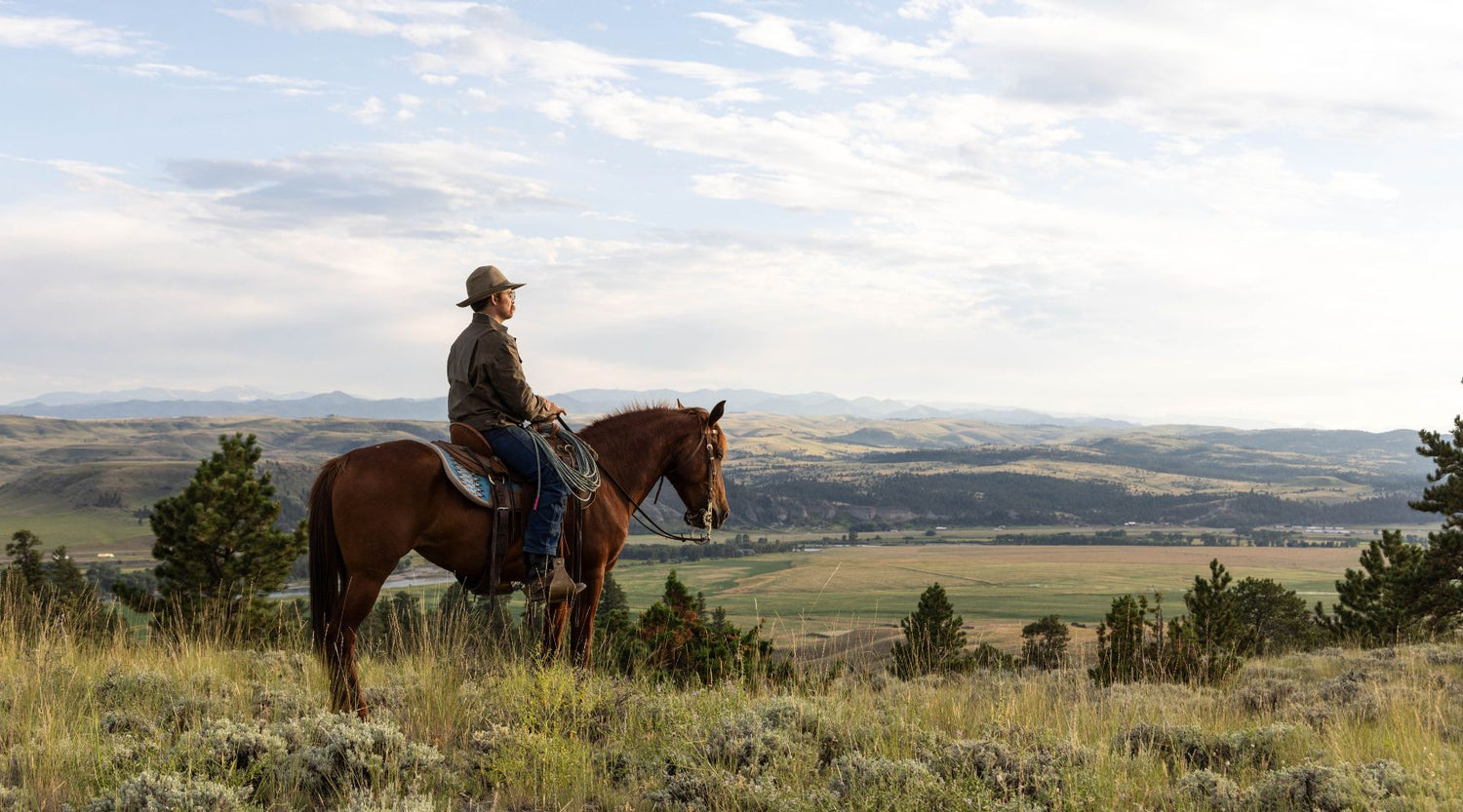I had a notion, hatched, no doubt, from my father’s penchant for Louis L’Amour paperbacks and Charlie Russell oils. Sleep on the ground under the western skies. Ride a good, true-footed horse into big country. Repeat.
The notion turned into an itch, the itch into a passion, the passion into an obsession. Somewhere along in there arrived Red. A bland name at first blush but at the time I was naming all of my colts after towering historic figures of the Old West. Butch Cassidy. Tom Horn. Even a Charlie Russell. So Red is actually Red Cloud, named for the famous Oglala Lakota leader, a chief whom his contemporary, the mystic Black Elk, considered a turncoat. Red Cloud and Black Elk, the horses, were born on the same day in the same corral. They are half-brothers and have rarely been separated their whole lives and now they are nearly inseparable old men.
Right off, let’s admit that horses are not for everyone, and, as with nearly everything on this blue marble, a human’s interest in horses can be measured in degrees of affliction. Notion, itch, passion, obsession. On the far end of the spectrum, before notion, are those who don’t like and even dislike and possibly fear our equine brethren. Some people are cat people. Some dog people, some horse. Some all three. Some none. I have a hard time trusting those in the last category, but that’s another story entirely.
Red grew tall for a saddle horse, nearly 17 hands. That’s only an inch or two shy of the average height of an American male, which means when you are sitting atop his back, you will be sitting as tall in the saddle as the top of your buddy’s head. Red turned into a people horse, meaning he will walk across a big pasture to say hello. Black Elk, whom we call Jack, ended up not giving a darn about people and can be known to turn the other way and run to the far end of the pasture when you come to say hello. Particularly if you are carrying a halter in your hand and seeking a ride. Red is more dog, Jack more cat.
If one’s possession by the rider’s gene tends toward the obsessive, as mine does, you’ll be fortunate enough to own a few horses that you’d call “The Horse” or the more sappy “Forever Horse.” This is also a curse because nothing breaks your heart like the death of a good horse. Or a dog. Or even the rare cat. An animal lover’s life is one of cyclic boundless joy and crippling grief.
But Red is still going now at 23. He’s going to break our family’s heart someday, probably sooner rather than later, but for now, he’s still Red and the memory of our most recent ride is still fresh in my mind, or maybe more accurately, my soul.
I had a notion again. What, I wondered, if a fella took a page from the great quail plantations of Georgia and applied it with enthusiasm to the public lands quail of the desert southwest? Simply put, what if you hunted wild desert quail off horseback behind a wind-drinking pointing dog? Weren’t thousands of acres of wild, rugged public land open to horseback upland hunting almost as good as thousands of acres of private plantation also with bird dogs and good horses? Maybe even better because one doesn’t have to ask permission or pay any trespass fees? All you have to do is go, right? And on a horse you could go farther and faster and cover far more ground than even the most fit foot soldier. You’re in the light cavalry, by God.
So Red and I went. Packing along a couple hard-charging pointing dogs, in this case English setters—another obsession and story—onto the national forests of southeastern Arizona and southwestern New Mexico.
We climbed a mountain, or rather Red did, following Mabel and Edna, setters. Up through juniper and agave, past granite boulders, and under giant Emery oaks. Once, a covey of Gambel quail flushed wild before the dogs could do their thing, but I tied Red and hunted the singles up on foot, then climbed aboard and rode on. Miles deep in the country, we found a spring that quenched a lone cottonwood tree where an optimistic cattleman had built a concrete tank to catch the spring’s thin offering. Red drank deeply while water boatmen oared lazily away from his muzzle and hid in the threads of algae. We ate and drank here and then moved on and up. I killed a handful of quail that day. Witnessed splendid dog work. Experienced decent shooting. We saw no other human, for we were far beyond the range of even the marathon walkers. A herd of javelina scattered from the manzanita and we saw tracks of ring-tailed cat and coatimundi. An unseen mountain lion likely watched us pass. January sunshine soaked into the core. But mostly there was the smell of saddle leather and gunpowder and horse sweat, the panting of a good bird dog, the click of horseshoe on mountain stone, the “wheat-wheat-wheeeeet!” of a flushed quail, and the feel of a horse I love moving toward an unnamed and unmarked horizon as he has carried me for twenty-odd years.
A good, true-footed horse in rough country and thanks for an obsession sparked in Dad’s library and art collection.
About the Author
Thomas Reed is the author of several books including Give Me Mountains For My Horses. He and his wife raise and sell fox-trotting horses and organic farm products from their farm and ranch outside Pony, Montana. His most recent work is as an editor of the upland hunting anthology Mouthful of Feathers, Upland in America.









